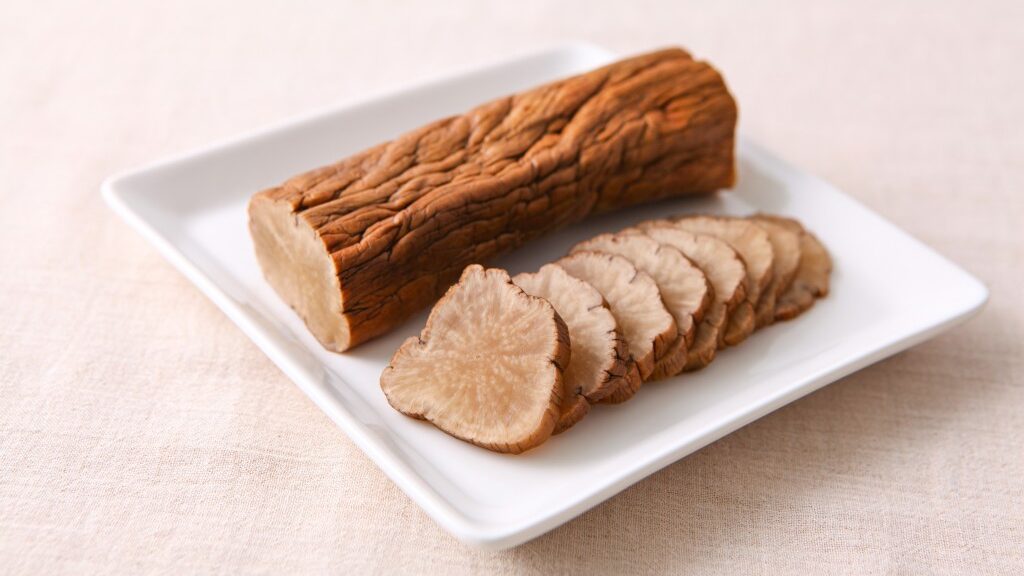
Hey there! Ever tried a smoked pickle? In Akita Prefecture, especially the southern inland region, they have this local delicacy called “Iburigakko.” It’s essentially smoked daikon radish pickles, and it’s got a fascinating history tied to surviving those long, snowy winters.
Dish Name: Iburigakko
- Region / Location: Akita Prefecture
- Primary Area of Tradition: Southern inland region of Akita Prefecture
- Main Ingredients: Daikon radish, rice bran, salt, sugar (granulated)
How It’s Eaten / Served
The process begins by braiding the daikon radishes by hand, starting with the thicker ones to ensure even smoking. They are then smoked for 2 to 5 days over the smoke of burning broad-leaved wood like oak or cherry. After smoking, they are漬け込み (tsukekomi – pickled) in a mixture of rice bran, salt, and granulated sugar for at least two months to ferment and mature. Before eating, the rice bran is lightly washed off with cold water, and the Iburigakko is sliced thinly and served. It’s a great accompaniment to rice, a snack with drinks, or even enjoyed with tea. Each household often has its own unique flavor, making it a special treat for guests and a point of pride among neighbors who compare their year’s batch.
Cultural Background and Preservation
In Akita, particularly the southern inland areas, the early arrival of winter brings heavy rainfall and snowfall due to the westerly winds from the Sea of Japan being blocked by the Ou Mountains. This resulted in short daylight hours and low temperatures, making it difficult to sun-dry daikon radishes properly for regular Takuan pickles. To overcome this, people hung the daikon over the hearth in their homes. The heat and smoke from the fire not only helped dry the daikon but also preserved it. Pickling it with rice bran and salt further removed moisture, allowing it to last through the winter. The slow fermentation in the cold winter temperatures also allowed the smoky aroma to meld perfectly with the pickling ingredients, creating the unique flavor of Iburigakko. This hearth-dried and pickled daikon is the origin of Iburigakko, with roots possibly dating back to the Muromachi period. The name itself is a combination of “iburi” (smoked) and “gakko” (Akita dialect for pickles). While fewer families now make it at home as a winter staple, production by local businesses has increased, and Iburigakko is now available throughout Akita and online. Its recognition as an ingredient is also growing, with various recipes appearing online and on social media. In 2017, the Akita Iburigakko Promotion Council was established, and in 2019, Iburigakko was registered as a GI (Geographical Indication), ensuring the preservation of its traditional production methods and quality standards. Local producers are united in their efforts to promote and improve the quality of this unique Akita specialty.
Additional information:
- Daikon radish: A large white radish commonly used in Japanese cuisine, often pickled.
- Rice bran (komenuka): The outer layer of the rice grain removed during milling, used in pickling for its flavor and moisture-absorbing properties.
- Takuan: A type of Japanese pickle made from daikon radish.
- Hearth (irori): A traditional sunken fireplace in Japanese homes, used for heating and cooking.
- Pickling (tsukemono): The process of preserving vegetables in salt, brine, or other seasonings.
- Fermentation: A metabolic process that converts sugar to acids, gases, or alcohol. In pickling, it contributes to the flavor and preservation of the vegetables.
- GI (Geographical Indication): A name or sign used on products that have a specific geographical origin and possess qualities or a reputation that are due to that origin.
The information about regional cuisine featured on this website (Piggy's Grandma of Japan) is summarized and adapted from the Ministry of Agriculture, Forestry and Fisheries of Japan (MAFF) website, "Our Regional Cuisines"Additional commentary is provided based on the unique experiences and perspectives of the site's editors.
The copyright for the original content regarding regional cuisine belongs to the Ministry of Agriculture, Forestry and Fisheries of Japan.
The summaries and adaptations published on this site are intended for informational purposes only. Piggy's Grandma of Japan does not guarantee the accuracy or completeness of this information. For the most accurate and complete details, please refer to the original pages on the MAFF website.

